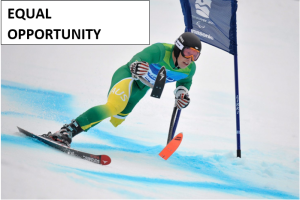
As we approach the 2024 Paralympic games, let us have a look at Inclusive sports! Persons with disability should be allowed to participate in sports/games of their choice. This is called inclusive sport. Inclusive sports are an important way to ensure that individuals with disabilities have the same opportunities as everyone else to participate in physical activity and sports. Here are some key points to keep in mind when it comes to inclusive sports for individuals with disabilities:
Accessibility: Sports facilities and equipment should be designed to be accessible to people with disabilities. This might mean having wheelchair ramps, braille signage, or specialized equipment.
Inclusive attitudes: It’s important that coaches, teammates, and spectators have an inclusive attitude towards individuals with disabilities. This means understanding that people with disabilities may have different abilities but can still contribute to a team and should be treated with respect and inclusion.
Adaptable rules and equipment: Inclusive sports often require adaptable rules and equipment to allow for a level playing field. For example, a visually impaired athlete might need a ball with a bell inside so they can hear it.
Training and support: Coaches and support staff should be trained in how to work with individuals with disabilities. This might involve understanding how to communicate with a non-verbal athlete, or how to modify drills to accommodate different abilities.
Involvement of individuals with disabilities in decision-making: Individuals with disabilities should be involved in decision-making when it comes to which sports they want to participate in and how they want to participate. This helps ensure that their voices are heard and that they are able to fully engage with the sport.
Overall, inclusive sports are an important way to ensure that individuals with disabilities can participate in physical activity and sports. By creating accessible facilities and equipment, promoting inclusive attitudes, adapting rules and equipment, providing training and support, and involving individuals with disabilities in decision-making, we can create a more inclusive and equitable sporting environment for all.
Now let’s have a look of Paralympic games and all its dimensions!
The Paralympic Games are a multi-sport event for athletes with physical, intellectual, and visual impairments. The Paralympic Games are held every four years, and they are organized by the International Paralympic Committee (IPC). The Paralympics include a variety of sports, some of which are adapted versions of Olympic sports, and others that are unique to the Paralympics. Here are some examples of Paralympic sports:
- Athletics (track and field): This includes events such as sprinting, distance running, jumping, and throwing.
- Swimming: This includes events such as freestyle, backstroke, breaststroke, butterfly, and medley.
- Wheelchair basketball: This is a team sport played by athletes in wheelchairs.
- Sitting volleyball: This is a team sport played on a smaller court with a lower net, designed for athletes with impairments to their lower limbs.
- Goalball: This is a team sport played by visually impaired athletes, in which a ball with bells inside is rolled across the court and the opposing team tries to defend their goal.
- Wheelchair rugby: This is a team sport played by athletes in wheelchairs, in which the aim is to carry a ball across the opponent’s goal line.
- Boccia: This is a precision sport played by athletes with severe physical impairments, who must try to land their balls as close as possible to a target ball.
- Para-cycling: This includes a range of cycling events for athletes with physical impairments, using different types of bicycles depending on the athlete’s needs.
These are just a few examples of the Paralympic sports. The Paralympics are an important platform for athletes with disabilities to showcase their skills and compete at the highest level, while also promoting inclusion and breaking down barriers.


